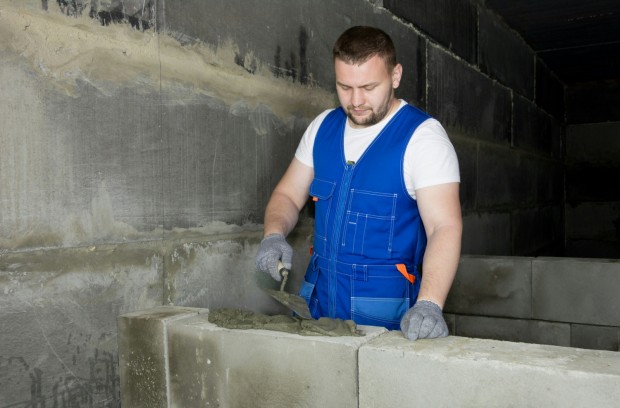Waterproofing a structure using cement is necessary to prevent any leaks from occurring. Nevertheless, you need to be aware of several varieties of cement waterproofing to choose the most appropriate for the building project you are working on.

(Photo : Unsplash/Bermix Studio)
1. Crystalline Admixtures Waterproofing
By reacting with water rather than hydrated cement particles, crystalline admixtures produce insoluble crystals when added straight to the concrete mixture. As mentioned, filling the pores and capillaries with these crystals efficiently prevents water from entering the concrete. Concrete may be sealed and protected from water penetration with this approach, which is also suited for various concrete applications.
2. Liquid Waterproofing Membrane
The concrete surface can be waterproofed by applying a thin coating of a liquid waterproofing membrane using a roller, spray, or trowel. Once the coating sets, it takes on the consistency of rubber. One of the most notable advantages of this method is that it creates a continuous barrier with noncontinuous joints. They are often used in wet areas, balconies, and rooftops. Because of its exceptional flexibility and endurance, it is a perfect option for complex situations in which buildings may experience minute shifts or movements.
3. Polyurethane-modified Cementitious Waterproofing
The polyurethane-modified cementitious waterproofing approach could be a better choice if you seek something that works well in areas with harsh weather. Also, it can function with various substrates while simultaneously improving the adherence of the coating when used. Using polyurethane-modified cementitious waterproofing is a long-lasting and adaptable way to keep water out. Additionally, it is intended to augment the coating's resistance to abrasion and crack-bridging capabilities and contribute to the coating's flexibility.
In regions where mechanical damage is a common concern, deploying this waterproofing approach is strongly suggested, and it can also be utilized in places with a lot of foot activity. This waterproofing method is advantageous for industrial floors, parking decks, and other areas frequently subjected to significant loads or frequent use.
Also Read: Revolutionary Design of Sterntubeless Ship Promises Major Environmental and Operational Gains
4. Flexible Cementitious Waterproofing
While maintaining its overall efficacy, the flexible cementitious waterproofing method can accommodate only minor substrate movements. Incorporating polymer-based additives into this process helps improve the final product's flexibility and durability, making it suitable for balconies and terraces. This waterproofing technique aims to generate a membrane that mimics elastic properties, allowing it to withstand substrate movement without cracking. In addition, due to its ability to connect with substrates, it is durable over an extended period and can be utilized in building applications.
5. Epoxy Waterproofing
The epoxy waterproofing system is a combination of epoxy resin and curing chemicals. In addition to being very strong and long-lasting, these systems are chemical and water-resistant. The utilization of epoxy systems is prevalent in applications that necessitate exceptional chemical resistance, including buildings made of concrete, storage areas, and water containers.
6. Acrylic Waterproofing
Acrylic waterproofing systems have exceptional flexibility, durability, and resistance to ultraviolet light. These solutions are versatile enough to be applied to various surfaces, including concrete and drywall. As a dependable barrier against water penetration, they are frequently used to construct roofs, terraces, and exterior walls. Accordingly, the 'Weberdry acr seal' is an excellent option for those searching for a solution for waterproofing acrylic.
Related Article: 43 vs. 53 Cement Grade in Construction: What's the Difference?







